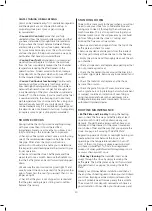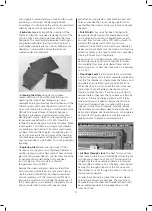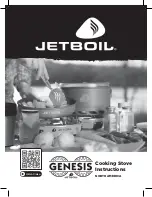
UK SMOKE CONTROL AREAS
The Clean Air Act 1993 and Smoke Control Areas
Under the Clean Air Act local authorities may declare
the whole or part of the district of the Authority to
be a Smoke Control Area. It is an offence to burn an
‘unauthorised fuel’ (ie non-smokeless fuel) in a Smoke
Control Area. It is a legal requirement that fuels burnt
or obtained for use in Smoke Control Areas have been
‘authorised’ and officially designated “Smokeless
Fuels’. Wood log are not classified as a Smokeless Fuel
and therefore should not be burned in the Gabriel
Inset stove if it is located in a building within a Smoke
Control Area. In such a case you must only use an
authorised Smokeless Fuel.
Further information on the requirements of the Clean
Air Act can be found here:
www.smokecontrol.defra.gov.uk
.
Your local authority is responsible for implementing
the Clean Air Act 1993 including designation and
supervision of Smoke Control Areas and you can
contact them for details of Clean Air Act requirements.
Even if you don’t live in a Smoke Control Area it is
still the householder’s legal responsibility not to cause
nuisance smoke. Your inset stove therefore should,
at all times,
be operated in accordance with these
instructions to which have been written to help you
minimise the amount of smoke produced from your
stove.
RECOMMENDED FUELS
Please note
If you live in a UK Smoke Control Area
you must only burn approved smokeless fuels. The
following fuels are approved by Olymberyl® for use in
the OL357i inset stove:
•
Wood Logs
Only ever use dried, fully seasoned
chopped wood logs with a moisture content of less
than 20%.
Wood which is well seasoned makes a distinctive
‘clack’ rather than a dull ‘thud’ when knocked
together. It will also feel much lighter than an
unseasoned log. Other indicators include bark peeling
away and cracking and splitting around the outside.
Ideally wood should be seasoned outdoors for
between 18 to 24 months – the harder the wood
then the longer the seasoning. It should be stacked
off the ground with plenty of space between the logs
to allow air movement and with the top covered to
keep rain and snow out. Seasoned wood will give
you approximately 50% more heat output than the
equivalent unseasoned log.
Most types of hardwood, for instance Ash (generally
regarded as the best), Birch, Beech, Oak and Elm can
be used. However, avoid woods with a high resin
content. As a rule of thumb, the heavier the wood,
then the greater the heat output and the longer burn
time – the time between refills. All of this is providing
it is fully seasoned wood.
Never use wet or unseasoned (green) wood as this will
cause nuisance smoke and a very disappointing fire.
Its use could quickly result in the build up of soot and
creosote which, because of the higher temperatures
of stove flue gases, could easily cause a flue or
chimney fire. In addition, burning wet wood creates
other environmental problems, a less efficient fuel
economy and can eventually clog your flue system
and cowl. It will also reduce the effectiveness of the
stove’s Airwash system thus causing staining and
blackening of the glass.
Wet or unseasoned would produces the following
poor performance:
• Hard to light fires
• Fires that are difficult to keep going or to keep
burning well
• Smoky fires with fewer flames which are also of a
dull orange colour
• Increased dense grey / blue smoke from the chimney
• Shorter burn times
• Low heat output
• Dirty glass and firebricks
• Excessive and rapid creosote build-up in the flue
system and chimney
• Unpleasant smoky smells both inside and sometimes
outside the house
Manufactured or finished wood products, such as
plywood and chipboard, must also be strictly avoided
because of the high chemical adhesive content used
in their production which will also leave harmful
residue inside the stove and flue system.
For more information about wood fuel visit the DEFRA
funded National Energy Foundation website
Logpile
at
www.nef.org.uk/logpile.
• Peat or ‘Turf’
Peat is an excellent cost-effective fuel
alternative and provides a similar calorific heat output
to wood. It’s also clean and easy to handle with low
atmospheric emissions. However, you must ensure
that the peat is kept thoroughly dry as it absorbs and
retains unwanted moisture very easily.
Peat has traditionally been used as a heating fuel in
both Scotland and Ireland and you can find out more
by visiting these suppliers’ useful websites – �www.
peatheat.co.uk (Scotland) and www.bnm.ie/fuels
(Ireland).
• Multi Fuels (Other than Wood or Peat)
If you
cannot burn wood then we recommend burning a
smokeless alternative, such as smokeless nuggets, as
this is better for the stove and flue system as well as
the environment. Your stove is also approved to burn
coal – however, we do not recommend prolonged use
of bitumous house coal because of the excessive soot
it produces. There are many different brands of high
quality smokeless coal nuggets available in the UK and
7








































